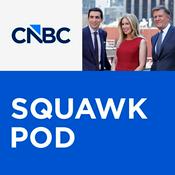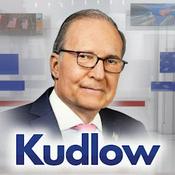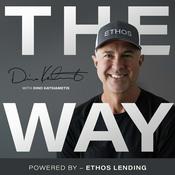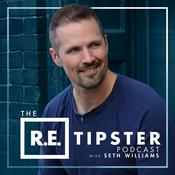1539 episodes

Driverless Cars Take the Fast Lane
1/08/2026 | 10 mins.
Our Head of U.S. Internet Research Brian Nowak and Andrew Percoco, Head of North America Autos and Shared Mobility Research, discuss why adoption of autonomous vehicles is likely to gain traction this year.Read more insights from Morgan Stanley.----- Transcript -----Brian Nowak: Welcome to Thoughts on the Market. I'm Brian Nowak, Morgan Stanley's Head of U.S. Internet Research. Andrew Percoco: And I'm Andrew Percoco, Head of North America Autos and Shared Mobility Research. Brian Nowak: Today we're going to talk about why we think 2026 could be a game changer and a point of inflection for autonomous vehicles and autonomous driving. It's Thursday, January 8th at 10am in New York. So, Andrew, let's get started. Have you ridden an autonomous car before? Andrew Percoco: Yeah, absolutely. Took a few in L.A., took one in San Francisco not too long ago. Pretty seamless and interesting experience to say the least. Brian Nowak: Any accidents or awkward left turns? Or did you feel pretty comfortable the whole time? Andrew Percoco: No, I felt pretty comfortable the whole time. No edge cases, no issues. So, all five star reviews for me. Brian Nowak: Andrew, we think your answer is going to be a lot more common as we go throughout 2026. As autonomous availability scales throughout more and more cities. Things are changing quickly. And we kind of look at our model on a city-by-city basis. We think that overall availability for autonomous driving in the U.S. is going to go from about 15 percent of the urban population at the end of 2025 to over 30 percent of the urban population by year end 2026. Andrew Percoco: Yeah, totally agree. Brian, I'm just curious. Like maybe layout for us, you know, what you're expecting for 2026 in more detail in terms of city rollouts, players involved and what we should be watching for throughout the next, you know, nine to 12 months. Brian Nowak: We have multiple new cities across the United States where we expect Waymo, Tesla, Zoox, and others to expand their fleet, expand autonomous driving availability, and ultimately make the product a lot more available and commonplace for people. There are also new potential edge cases that we think we're going to see. We're going to have our first snow cities with Waymo expected to launch in Washington, D.C.; potentially in Colorado, potentially in Michigan. So, we could have proof of concept that autonomous driving can also work in snow throughout [20]26 and into 2027 as well. So, in all, we think as we sit here at the start of [20]26, one year from now, there's going to be a lot more people who are going to say: I'm using an autonomous car to drive me around in my everyday practice. Andrew Percoco: Yeah, that makes a lot of sense. And I guess, what do you think the drivers are to get us there, right? There's also some concerns about safety, adoption, you know, cost structure. What are the main drivers that really make this growth algorithm work and really scales the robotaxi business for some of the key players? Brian Nowak: Part of it is regulatory. You know, we are still in a situation where we are dealing with state-by-state regulatory approvals needed for these autonomous vehicles and autonomous fleets to be built. We'll see if that changes, but for now, it's state by state regulation. After that, it comes down to technology, and each of the platforms needs to prove that their autonomous offerings are significantly safer than human driving. That is also linked to regulatory approval. And so, when we think about fleets becoming safer, proving that they can drive people more miles without having an accident than even a human can – we think about the autonomous players then scaling up their fleets. To make the cars and fleets available to more people. That is sort of the flywheel that we think is going to play out throughout 2026. The other part that we're very focused on across all the players from Waymo to Tesla to Zoox and others is the cost of the cars. And there is a big difference between the cost of a Waymo per mile versus the cost of a Tesla per mile. And we think one of the tension points, Andrew, that you can, you can talk about a little bit here, is the difference in the safety data and what we see on Tesla as of now versus Waymo – versus the cost advantage that Tesla has. So, talk about the cost advantage that Tesla has through all this as of right now. Andrew Percoco: Yeah, definitely. So, you know, as you mentioned, Tesla today has a very clear cost advantage over many of the robotaxi peers that they're competing with. A lot of that's driven by their vertical integration, and their sensor suite, right? So, their vehicle, the cost of their vehicle is – call it $35,000. You've got the camera only sensor approach. So, you don't have lidar, expensive lidar, and radar in the vehicle. And that's just really driven a meaningful cost improvement and cost advantage. On our math about a 40 percent cost advantage relative to Waymo today. Now going forward, you know, as you mentioned, I think the key hurdle here or bottleneck, that Tesla still needs to prove is their safety. And can they reach the same safety standards as a human driver? And, you know, the improvement that you've seen from Waymo. You know, to put some numbers around this. Based on publicly available data in Austin, Tesla's getting in a crash, you know, every about, call it every 50,000 miles; Waymo is closer to every 400,000 miles per crash. So today, Waymo is the leader on safety.I think the one important caveat that I want to mention here is that's on a relatively small number of miles driven for Tesla. They've only driven about 250,000 miles in Austin, whereas Waymo's driven close to, I think, a hundred million miles cumulatively. So, when you look back, I think this is going to be the kind of key catalyst and key data point for investors to watch is – how that data improves over the course of 2026. If you track Waymo – Waymo's data improved substantially as their miles driven improved, and as they launched into new cities.We'd expect Tesla to follow a similar trend. But that's going to be a huge catalyst in validating this camera only approach. If that happens, Tesla's not limited in scale, they're not limited in manufacturing capacity. You can meaningfully see them expand… Or you can see them expand quite quickly once they prove out that safety requirement. Brian Nowak: I think it's a great point because, you know, one of the other big debates that we are all going to have to monitor in the AV space throughout 2026 is: How quickly does Tesla completely pull the safety drivers, and how quickly do they scale up production of the vehicles? Because one of the bank shots around autonomous driving is actually the rideshare industry. You know, we have partnerships; some partnerships between Waymo and Uber and Waymo and Lyft. But Tesla is not partnering with anyone. And so, I think the extent to which we see a faster than expected ramp up in deployment from Tesla can have a lot of impact. Not only on autonomous adoption, competition with Waymo, but also the rideshare industry.So how do you think about the puts and takes on Tesla and sort of removing the drivers and scaling up the fleet this year? What should we be watching? Andrew Percoco: Yeah, so they've already made some strides there in Austin. They’ve pulled the safety monitor. They haven't opened that up to the public yet without the safety monitor. They're still testing, presumably in that geography. They need to be extremely careful in terms of, you know, the regulatory compliance and making sure they're doing this in a safe way. Ultimately that's what matters most to them. We do expect them to roll it out to the public without the safety monitor in 2026. Whether or not, that's the first quarter or the third quarter – is a little bit tougher to predict. But I think it's reasonable to assume whatever the timeline is, they're going to make sure it's the safest way possible to ensure that there's, you know, no unintended consequences as it relates to regulation, et cetera. I think one, also; one important data point or interesting data point here. You know, we model, I think, a 100 percent CAGR in miles driven, autonomous miles driven through 2032. You can talk a little bit about, you know, what the implications for rideshare, but I think important. It's important to contextualize that would still only represent less than 1 percent of total U.S. miles driven in the U.S. So substantial growth over the next, call it six or seven years. But still a massive TAM to be tapped into beyond 2032. And I think the key there is – what's the cost reduction roadmap look like? And can we get robotaxis to a point where they are cheaper than personal car ownership? And could robotaxis at some point disrupt the car ownership process? Brian Nowak: Yeah. And the other more important point around rideshare will be how much do these autonomous offerings expand the addressable market for rideshare and prove to be incremental? As opposed to being cannibalistic on existing ride share rides. Because you're right that, you know, even our out year autonomous projections still have it less than 1 percent of the total trips. But the question is how much does that add to ride share? Because in some scenarios, those autonomous trips could end up being 20 to 30 percent of the rideshare industry. This matters for Uber and Lyft because while they are partnering Waymo and other autonomous players across a handful of markets, they're not partnered in all the markets. And in some markets, Waymo is going alone. Tesla is going at it alone. And so when we look at our model and we say as of 2024, Uber and Lyft make up 100 percent of the ride share industry based on the current partnerships, which includes Waymo and Tesla and all; and Zoox and all the players, we think that Uber and Lyft will only make up 30 percent of the autonomous driving market. And so it's really important for the rideshare industry that when, number one, we see AV’s being incremental to the TAM; and two, that Uber and Lyft are able to continue to add more partnerships over time to drive more of that overall long-term AV opportunity and participate in all this rideshare industry over the next five years. Andrew Percoco: I think it's really clear that the future of autonomous vehicles is here and we've reached an inflection point; and there's a lot of interesting catalysts and data points for us and for investors to watch for throughout 2026.So Brian, thanks again for taking the time to talk. Brian Nowak: Andrew, great speaking with you. And thanks for listening. If you enjoy Thoughts on the Market, please leave us a review wherever you listen and share the podcast with a friend or colleague today.

A Revolution in Credit Markets
1/07/2026 | 11 mins.
Our Chief Fixed Income Strategist Vishy Tirupattur is joined by Dan Toscano, the firm’s Chairman of Markets in Private Equity, unpack how credit markets are changing—and what the AI buildup means for the road ahead.Read more insights from Morgan Stanley.----- Transcript -----Vishy Tirupattur: Welcome to Thoughts on the Market. I am Vishy Tirupattur, Morgan Stanley's Chief Fixed Income Strategist. Today is a special edition of our podcast. We are joined by Dan Toscano, Chairman of Markets in Private Equity at Morgan Stanley, and a seasoned practitioner of credit markets over many, many credit cycles. We will get his thoughts on the ongoing evolution and revolution in credit marketsIt's Wednesday, January 7th at 10am in New York. Dan, welcome.Dan Toscano: Glad to be here.Vishy Tirupattur: So, to get our – the listeners familiar with your journey, can you talk a little bit about your experience in the credit markets, and how you got to where we are today?Dan Toscano: Yeah, sure. So, I've been doing this a long time. You used the nice word seasoned. My kids would refer to it as old. But I started in this journey in 1988. And to make a long story short, my first job on Wall Street was buying junk bonds in the infancy of the junk bond market, when most of what we were financing were LBOs. So, if you're familiar with Barbarians at the Gate, one of the first bonds we bought were RJR Nabisco reset notes. And I've been doing this ever since, so over almost four decades now.Vishy Tirupattur: So, the junk bond market evolved into high yield market, syndicated loan market, CLO market, financial crisis. So, talk to us about your experiences during this transition.Dan Toscano: Yeah. I mean, one of the things these markets do is they finance evolution in industries. So, when I think back to the early days of financing leveraged buyouts, they were called bootstrap deals. The first deal I did as an intermediary on Wall Street as opposed to as an investor, was a buyout with Bain Capital in 1993. At the time, Bain Capital had a $600 million AUM private equity platform. Think about that in the scale of what Bain Capital does in private equity today. You know, back then it was corporate carve outs, and trying to make the global economy more efficient. And you remember the rise of the conglomerate. And so, one of the early things we financed a lot of was the de-conglomeration of big corporates. So, they would spin off assets that were not central to the business or the strengths that they had as an organization.So, that was the early days of private equity. There was obviously the telecom build out in the late 90’s and the resulting bust. And then into the GFC. And we sit here today with the distinctions of private capital, private credit, public credit, syndicated credit, and all the amazing things that are being financed in, you know, what I think of as the next industrial revolution.Vishy Tirupattur: In terms of things that have changed a lot – a lot also changed following the financial crisis. So, if you dig deep into that one thing that happened was the introduction of leveraged lending guidelines. Can you talk about what leveraged lending guidelines did to the credit markets?Dan Toscano: Yeah, I mean, it was a big change for underwriters because it dictated what you could and couldn't participate in as an underwriter or a lender, and so it really cut off one end of the market that was determined by – and I think the thing most famously attributed to the leveraged lending guidelines was this maximum leverage notion of six times leverage is the cap. Nothing beyond that. And so that really limited the ability for Wall Street firms to underwrite and distribute capital to support those deals.And inadvertently, or maybe by plan, really gave rise to the growth in the private credit market. So, when you think about everything that's going on in the world today, including, which I'm sure we'll talk about, the relaxation of the leveraged lending guidelines, it was really fuel for private credit.Vishy Tirupattur: So private credit, this relaxation that you mentioned, you know, a few weeks ago, the FDIC and the OCC withdrew the leveraged lending guidelines in total. What do you expect that will do to the private credit markets? Will that make private credit market share decrease and bank market share increase?Dan Toscano: I think many people think of these as being mutually exclusive. We've never thought of it that way. It exists more on a continuum. And so, what I think the relaxation of those guidelines or the elimination of those guidelines really frees the banks to participate in the entire continuum, either as lenders or as underwriters.And so, in addition to the opportunity that gives the banks to really find the best solutions for their clients, I think this will also continue the blurring of distinctions between public market credit and private market credit. Because now the banks can participate in all of it. And when you think about what defines in people's minds – public credit versus private credit, in many cases it's driven by what terms look like. Customary terms for a syndicated bond or loan versus a private credit loan.Also, who's participating in it. You know, these things have been blurring, right? There's a cost differential or a perceived cost differential that has been blurring for some time now. That will continue to happen, in my opinion anyway.Vishy Tirupattur: I totally agree with you, Dan, on that. I think not only the distinction between public credit and private credit, but also within the various credit channels – secured, unsecured, securitized, structured – all these distinctions are also blurring. So, in that context, let's talk a little bit more about what private credit's focus has been and where private credit focus will be going forward. So, what we'll call private credit 1.0. Focused predominantly on lending to small and medium-sized enterprises. And we now see that potentially changing. What is driving private credit 2.0 in your mind?Dan Toscano: Well, the elephant in the room is digital infrastructure. Absolutely. When you think about the scale of what is happening, the type of capital that's required for the build out, the structure you need around it, the ability to use elements of structure. You mentioned several of them earlier. To come up with an appropriate risk structure for lending is really where the market is heading. When you think about the trillions of dollars that we anticipate is needed for the technology industry to complete this transformation – not just around digital infrastructure, but around everything associated with it.And the big one I think of most often is power, right? So, you need capital to build out sources of power, and you need capital to build out the data centers to be able to handle the compute demand that is expected to be there. This is a scale unlike anything we have ever seen. It is the backbone of what will be the next industrial revolution.We’ve never seen anything like this in terms of the scale of the capital needed for the transformation that is already underway.Vishy Tirupattur: We are very much on board with this idea as well, Dan, in terms of the scale of the investment, the capital investment that is needed. So, when you look ahead for 2026, what worries you about the ind ustrial revolution financing that is underway?Dan Toscano: Given all that's going on in the world, this massive capital investment that's going on globally around digital infrastructure, we've never seen this before. And so, when I look at the capital raising that has been done in 2025 versus what will be done in 2026, I think one of the differences that we have to be mindful of is – nothing's gone wrong while we were raising capital in 2025 because we were very much in the infancy of these buildouts. Once you get further into these buildouts and the capital raises in 2025 that are funding the development of data centers start to season, problems will emerge. The essence of credit risk is there will be problems and it's really trying to predict and foresee where the problems will be and make sure you can manage your way through them.That is the essence of successful credit investing. And so there will definitely be issues when you think about the scale of the build out that is happening. Even if you look just in the U.S., where you need access to all sorts of commodities to build out. And you know, people focus on chips, but you also need steel and roofing, and importantly labor.And as we talk to people about the build outs, one of the concerns is supply of labor supply and cost of labor. So, when you run into situations where maybe a project is delayed a bit, or the costs are a bit more than what was expected, there will be a reaction. And we haven't had that yet. We will start to see that in 2026 and how investors and the markets react to that, I think will be very important. And I'm a little bit worried that there could be some overreaction because people have trained themselves in 2025 to think of like, ‘I'm operating in a perfect environment,’ because we haven't really done anything yet. And now that we've done something, something can and will go wrong. So, you know, we'll see how that plays out.I am very fixated in 2026 on the laws of supply and demand. When I think about what's going on right now, we usually have visibility on demand. And we usually have some level of visibility on supply. Right now, we have neither – and I say that in a positive way. We don't know how big the demand is in the capital world to fund these projects. We don't know how big that can be. And almost with every passing day, the supply – and what we're hearing from our clients about what they need to execute their plans – continues to grow in a way that we don't know where it ends. And the scale, we're talking trillions of dollars, right? Not billions, not millions, but trillions.And so, I look at that – not so much as something I worry about, but something I'm really curious about. Will we run out of money to fund all of the ambitions of the Industrial Revolution? I don't think so. I think money will find great projects, but when you think about the scale of what we're looking at, we've never seen anything like it before. And it will be fascinating to watch as the year goes on.Vishy Tirupattur: Thanks Dan. That's very useful. And thanks for taking the time to speak to us and share your wisdom and insights. Dan Toscano: Well, it's great to be here.Vishy Tirupattur: And to our audience, thanks for listening. If you enjoyed the show, please leave us a review wherever you listen and share thoughts on the market with a friend or colleague today

How Venezuela Events Could Affect Markets and Policy
1/06/2026 | 5 mins.
Our Deputy Director of Global Research Michael Zezas and our U.S. Public Policy Strategist Ariana Salvatore discuss the implications of the U.S action in Venezuela for global markets, foreign and domestic policy.Read more insights from Morgan Stanley.----- Transcript -----Michael Zezas: Welcome to Thoughts on the Market. I'm Michael Zezas, Deputy Global Head of Research for Morgan Stanley. Ariana Salvatore: And I'm Ariana Salvatore, Head of Public Policy Research. Michael Zezas: Today we're talking about the latest events in Venezuela and its implications for global markets.It's Tuesday, January 6th at 10am in New York. So, Ariana, before we get into it: Long time listeners might have noticed in our intro, a changeup in our titles. Ariana, you're stepping in to lead day-to-day public policy research. Ariana Salvatore: That's right. And Mike, you're taking on more of a leadership role across the research department globally. Michael Zezas: Right, which is great news for both of us. And because the interaction between public policy choices and financial markets is as critical as ever, and because collaboration is so important to how we do investment research at Morgan Stanley – tapping into expertise and insight wherever we can find it – you’re still going to hear from one of – and sometimes both of us – here on Thoughts on the Market on a weekly basis. Ariana Salvatore: And this week is a great example of this dynamic as we start the New Year with investors trying to decide what, if anything, the recent U.S. intervention in Venezuela means for the outlook for markets. Michael Zezas: Right. So, to that point, the New Year's barely begun, but it's already brought a dramatic geopolitical situation: The U.S. capture and arrest of Venezuela's President Nicolas Maduro – an event that can have far reaching implications for oil markets, energy, equities, sovereign credit, and politics. Ariana, thinking from the perspective of the investor, what's catching your attention right now? Ariana Salvatore: I think clients have been trying to get their arms around what this means for the future of U.S. foreign policy, as well as domestic policy making here too. On the first point, I would say this isn't necessarily a surprise or out of step with the goals that the Trump administration has been at least rhetorically emphasizing all year. Which is to say we think this is really just another data point in a pre-existing longer term trend toward multipolarity. Remember that involves linkage of economic and national security interest. It comes with its own set of investment themes, many of which we've written about, but one in particular would be elevated levels of defense spending globally, as we're in an increasingly insecure geopolitical world. Another tangible takeaway I would say is on the USMCA review. I think the U.S. has likely even more leverage in the upcoming negotiations, and likely is going to push even harder for Mexico to put up trade barriers or take active steps to limit Chinese investment or influence in the country. Enforcement here obviously will be critical, as we've said. And ultimately, we do still think the review results in a slightly deeper trade integration than we have right now. But it's possible that you see tariffs on non-USMCA compliant goods higher, for example, throughout these talks. Michael Zezas: And does this affect at all your expectations for domestic policy choices from the U.S.? Ariana Salvatore: I think it's important to emphasize here that we're just seeing an increasingly diminished role for Congress to play. The past year has been punctuated by one-off US foreign policy actions and a usage of executive authority over a number of different policy areas like immigration, tariffs, and so on. So, I would say the clearest takeaway on the domestic front is we're seeing a policy making pattern that is faster and more unilateral, right? If you don't need time for consensus building on some of these issues, decisions are being made by a smaller and smaller group of people. That in itself just increases policy uncertainty and risk premia, I would say across the board. But Mike, let's turn it back specifically to Venezuela. One of the most important questions is on – what this all means for global oil markets. What are our strategists saying there? Michael Zezas: Yeah. So, oil markets are the natural first place to look when it comes to the impact of these geopolitical events. And the answer more often than not is that the oil market tends not to react too much. And that seems to be the case here following the weekend’s Venezuela developments. That's because we don't expect there to be much short-term supply impact. Over the medium-term risks to Venezuela’s production skew higher. But while Venezuela famously holds one of the largest oil reserves in the world – it's about 17 percent of the world’s oil reserves – in terms of production, its contribution is relatively small. It's less than 1 percent of global output. So, among the top 10 reserve holders, Venezuela is by far the smallest producer. So, you wouldn't expect there to be any real meaningful supply impact in the markets, at least in the near term. So, one area where there has been price movement is in the market for Venezuela sovereign bonds. They have been priced for low recovery values and the potential restructuring that was far off. But now with the U.S. more involved and the prospect of greater foreign investment into the country's oil production, investors have been bidding up the bond price in anticipation of potentially a sooner restructuring and higher recovery value for the bonds. Ariana Salvatore: Right. And to that point, our EM sovereign credit strategists anticipate limited spillover to broader LatAm sovereign credit. Any differentiation is more likely to reflect degrees of alignment with the U.S. and exposure to oil prices and potential increases in Venezuelan production, which could leave Mexico and Columbia among relative under underperformers. Michael Zezas: Right. And this seems like it's going to be an important theme all year because the U.S. actions in Venezuela seem to be a demonstration of the government's willingness to intervene in the Western Hemisphere to protect its interests more broadly. Ariana Salvatore: That's right. So, it's a topic that we could be spending much more time talking about this year. Michael Zezas: Great. Well, Ariana, thanks for taking the time to talk. Ariana Salvatore: Great speaking with you, Mike. Michael Zezas: And as a reminder, if you enjoy Thoughts on the Market, please take a moment to rate and review us wherever you listen; and share Thoughts on the Market with a friend or colleague today.

The Bullish Signals That Investors Overlook
1/05/2026 | 5 mins.
Our CIO and Chief U.S. Equity Strategist Mike Wilson discusses key catalysts that investors may be missing, but that are likely to boost U.S. equities in 2026.Read more insights from Morgan Stanley.----- Transcript -----Welcome to Thoughts on the Market. I'm Mike Wilson, Morgan Stanley’s CIO and Chief U.S. Equity Strategist. Today on the podcast I’ll be discussing the converging market forces bolstering our bullish outlook for 2026. It's Monday, January 5th at 11:30am in New York. So, let’s get after it. The New Year is usually a time to look forward. But today, I want to take a step back and talk about what the market is missing. A series of bullish catalysts are lining up at the same time, and the market is still underestimating their collective impact. There’s been a lot of focus on individual positives—solid earnings growth, further Fed easing—but in our view, the real story is how these forces are reinforcing one another. Deregulation, positive operating leverage, accommodative monetary policy, and increasingly supportive fiscal policy are all working in the same direction. And as we head into mid-term elections later this year, these policy levers are likely to stay supportive.Importantly, this isn’t a market that’s already priced for the outcomes I envision. Positioning in cyclical trades remains relatively light, and sentiment in economically sensitive areas is far from exuberant. That combination—of improving fundamentals with cautious positioning—is exactly what tends to characterize the early stages of a recovery. I continue to believe these tailwinds are most underappreciated in cyclical areas like Consumer Discretionary Goods, Financials, Industrials, and small- and mid-cap stocks. Many of the indicators we track are only just beginning to turn higher. This doesn’t look late-cycle to me—it looks early in what I have deemed to be a rolling recovery. One reason investors have been hesitant is the sluggishness of traditional business-cycle indicators, particularly the ISM Manufacturing Purchasing Managers Index. There’s been a reluctance to press cyclical trades until those gauges clearly re-accelerate; and beneath that hesitation is a lingering anxiety that the U.S. economy could even slip back into a growth scare. My view is different. I believe a three year rolling recession ended with Liberation Day. If that’s true, then the moderate softness we’re now witnessing in lagging labor data is constructive for equities because it keeps the Fed leaning dovish for longer and more aggressive—a positive for equities. I see the second half of 2025 as the bottoming process for key macro indicators; with 2026 shaping up as a year of re-acceleration. Longer-cycle analysis supports this. Specifically, the 45-month cycle of the ISM Manufacturing Purchasing Managers Index points to a rebound. That recovery has been delayed—but not cancelled. Another tailwind that doesn’t get nearly enough attention is energy prices. Gasoline prices in particular are sitting near five-year lows, which is providing real economic relief for lower- and middle-income consumers. That cushion matters, especially as other parts of the economy firm. This past weekend’s events in Venezuela argue for lower oil prices for longer. From a sector standpoint, Financials stand out as the key beneficiary of deregulation and these stocks have been great performers over the past year in anticipation of these changes. I think there is more to go in 2026. Housing could be another important piece of the recovery. Subdued wage growth and falling rents may pressure home prices, while some builders are prioritizing volume over margins. While that may cap profitability for the builders, it could unlock housing velocity and feed into a more dovish inflation backdrop. Of course, there are also risks. Liquidity has been our top concern since September, and markets have reflected that through weakness in speculative assets. The good news is that the Fed has responded by ending quantitative tightening early and restarting asset purchases through the Reserve Management Program. This effectively adds liquidity to a system that was showing signs of stress this past several months. Another risk is a renewed slowdown in AI CapEx, particularly as markets demand clearer payback from debt-funded spending. And geopolitically, the U.S. intervention in Venezuela raises new questions. Strategically, it reinforces U.S. influence in the Western Hemisphere and supports our ‘Run It Hot’ thesis—but the key wildcard remains whether China chooses to react. Net-net, we think the balance of risks and rewards still favor leaning into this early-cycle recovery and our bullish outlook for US equities in 2026. Thanks for tuning in; I hope you found it informative and useful. Let us know what you think by leaving us a review. And if you find Thoughts on the Market worthwhile, tell a friend or colleague to try it out!

Bigger Tax Refunds Likely to Power the Economy
1/02/2026 | 3 mins.
Our U.S. Economist Heather Berger discusses how larger tax refunds in 2026 could boost income and help support consumer balance sheets throughout the year.Read more insights from Morgan Stanley. ----- Transcript -----Welcome to Thoughts on the Market and Happy New Year! I’m Heather Berger, from Morgan Stanley’s US Economics Team. On today’s episode – why U.S. consumers can expect higher tax refunds, and what that means for the overall economy. It’s Friday, January 2nd, at 10am in New York.As we kick off 2026, it’s not just a fresh start. It’s also the time when tax refund season is right around the corner. For many of us, those refunds aren’t just numbers on a page; they shape the way we budget for many everyday expenses. The timing and size of our refunds this year could make a real difference in how much we’re able to save, spend, or get ahead on bills.In the wake of the One Big Beautiful Bill Act, this year’s tax refund season is shaping up to be bigger than usual. The new fiscal bill packed in a variety of tax cuts for consumers. It also included spending cuts to programs such as SNAP benefits and Medicaid, but most of those cuts don’t pick up until later this decade. Altogether, this means that we’ll likely see personal incomes and spending power get a boost in 2026.Many of the new deductions and tax credits for consumers in the bill were made retroactive to the 2025 fiscal year. These include deductions for tips and overtime, a higher child tax credit, an increased senior deduction, and a higher cap on state and local tax deductions, among others. The retroactive portion of these measures should be reflected in tax refunds early this year. Overall, we’re expecting these changes to increase refunds by 15 to 20 percent on average. And different groups will benefit from different parts of the bill. For example, the higher state and local tax cap is likely to help high-income consumers the most, while deductions for tips and overtime will be most valuable to middle-income earners.Historically, U.S. consumers receive about 30 to 45 percent of tax refunds by the end of February, with then 60 to 70 percent arriving by the end of March. Because of the new tax provisions, we're anticipating a noticeable boost in personal income during the first quarter of the year. While we do also expect this legislation to encourage higher spending, it's unlikely that we'll see spending rise as sharply as income right away. According to surveys, most consumers say they use their refunds mainly for saving or paying down debt. This can lead to healthier balance sheets, which is shown by higher prepayment rates and fewer loan delinquencies during the tax refund season.When people choose to spend all or some of their tax refunds, they typically put that money toward everyday needs, travel, new clothes, or home improvements. Looking ahead, we do still see some near-term headwinds to spending, such as expected increases in inflation from tariffs and the expiration of the Affordable Care Act credits, which will most affect low-income consumers. As we progress throughout the year, though, we’re anticipating steady growth in real consumer spending as the labor market stabilizes, inflation decelerates, and lagged effects of easier monetary policy flow through. On top of that, this year’s larger tax refunds should give another lift to household spending.The boost to spending, along with other corporate provisions in the bill, should give the broader economy a push this year too. We expect the bill as a whole to support GDP growth in 2026. But it then becomes a drag on growth in later years when more of the spending cuts take effect.Thanks for listening. If you enjoy the show, please leave us a review wherever you listen and share Thoughts on the Market with a friend or colleague today.
More Business podcasts
Trending Business podcasts
About Thoughts on the Market
Listen to Thoughts on the Market, Unblinded with Sean Callagy and many other podcasts from around the world with the radio.net app
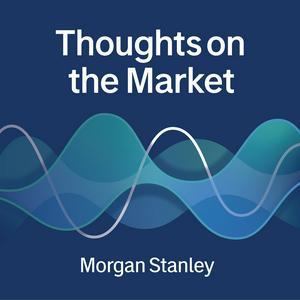
Get the free radio.net app
- Stations and podcasts to bookmark
- Stream via Wi-Fi or Bluetooth
- Supports Carplay & Android Auto
- Many other app features
Get the free radio.net app
- Stations and podcasts to bookmark
- Stream via Wi-Fi or Bluetooth
- Supports Carplay & Android Auto
- Many other app features


Thoughts on the Market
download the app,
start listening.










